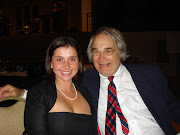
I came across Terry Laundry when reading Marty Schwartz' s book in the late 1990's. Terry called the top of the market in 2000 and I made money on his advise so I became hooked. Unlike Terry, Marty is parsimonious with the details of his trading tools and methods. I have picked up bits and pieces of his details through reading Marty's published interviews. Marty digresses from Terry in that he holds sacred the amplitude of the oscillator in calling tops and bottoms. For this reason I draw the horizontal lines of my charts at each standard deviation of the oscillator. This makes it easier to judge the over-bought and over-sold state of the oscillator.
Since there is no available data to compute the net up and down volume for intra-day time periods i.e. 10 minute periods, I needed to find a unit of study that would approximate this volume data. My basic data-point for intra-day charting is the net arithmetical difference between the 10 minute close and 10 minute low less the 10 minute high and 10 minute close i.e. (close-lo)-(hi-close). (close-lo)= up volume: (hi-close)= down volume. The result is a quantity that represents the net up and down volume for this time period. This is the value I plug into Terry Laundry’s formula for his volume oscillator. You can visit Terry’s blog from my link for a complete description of his formula.
I know this process is valid because I have done extensive calculations using my daily Hi-Lo-Close unit of study and have compared this new oscillator with Terry Laundry’s daily oscillator and my new daily oscillator charts are the exact images of Terry Laundry's oscillator charts. Therefore the 10-minute calculations are valid representations of Terry's Volume Oscillator because the market is a fractal.
I will further explain the new oscillators in later posts




No comments:
Post a Comment